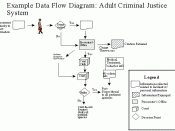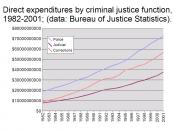A good start to a discussion of rape law would be to give the legal defintion. Rape is the forcible insertion using force or the threat of force, against the consent of the victim. Consent may not be given if the person is under the age of 17.
After studying Estrich, Mackinnon, and Wriggins theories, we can see a few simialrities and differences. Wriggens identifies that during slavery, the legal system treated seriously only one racial combination of rape-fape involving a Black offender and a white victim. This selective recognition continued long after slavery ended, while Estrich and MacKinnon's critiques focused more on how rape between strangers was treated very seriously , while rape between women who knew the offender wasn't. MacKinnon held that using consent as the legal criterion to draw the line between rape and intercourse would evade the issue of male dominance in heterosexual relations.
She like Estrich feels that the rape laws are written to proect the perpetrator rather than the victim. Estrich feels that the problems are embedded in the law itself. Her major problem is the exclusion of "mens rea", or guilty mind. This is needed for all criminal acts except for rape. She feels that the law is incredibly ineffective because it puts the victim on trial rather than the offender. No other crime does this. If in a case the person has consented to sex before, then it will make her less plausible, and then the law may require some sign of force or resistence. Wriggens also felt the law was ineffective, especially during the early 20th century, she noted that "it was doubtful whether the legal system better protected the rights of a Black man accused of raping a white woman than did the mob. Contemporary legal literature used...



Good
The essay gave me new information, so I liked it; but you could have talked about the laws that help rape victims, instead of only stating the bad ones.
I agree with you about the idea that the laws should be more fair for the victims.
You should have put a bibliography somewhere so I know where to find information about the stuff you spoke about.
0 out of 1 people found this comment useful.